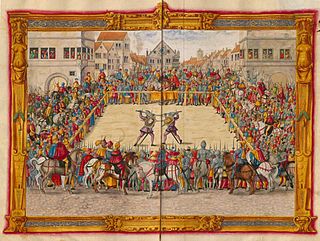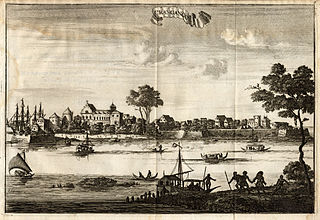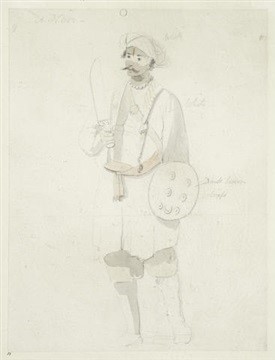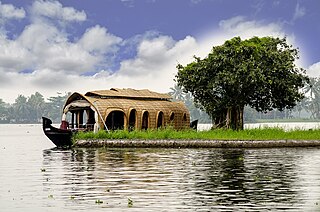Related Research Articles

A duel is an arranged engagement in combat between two people, with matched weapons, in accordance with agreed-upon rules.

The Kingdom of Travancore, also known as the Kingdom of Thiruvithamkoor, was an Indian kingdom from c. 1729 until 1949. It was ruled by the Travancore Royal Family from Padmanabhapuram, and later Thiruvananthapuram. At its zenith, the kingdom covered most of the south of modern-day Kerala and the southernmost part of modern-day Tamil Nadu with the Thachudaya Kaimal's enclave of Irinjalakuda Koodalmanikyam temple in the neighbouring Kingdom of Cochin. However Tangasseri area of Kollam city and Anchuthengu near Attingal in Thiruvananthapuram were parts of British India. Bordering the kingdom were the five Tamil-majority Taluks of Madras Presidency to the north, Madurai and Tirunelveli districts of Pandya Nadu region in Madras Presidency to the east, the Indian Ocean to the south, and the Arabian Sea to the west. As of the 1911 Census of India, Travancore was divided into five: Padmanabhapuram, Trivandrum, Quilon, Kottayam, and Devikulam, of which the first and last were predominantly Tamil-speaking areas.

Trial by combat was a method of Germanic law to settle accusations in the absence of witnesses or a confession in which two parties in dispute fought in single combat; the winner of the fight was proclaimed to be right. In essence, it was a judicially sanctioned duel. It remained in use throughout the European Middle Ages, gradually disappearing in the course of the 16th century.

Kalaripayattu is an Indian martial art that originated in modern-day Kerala, a state on the southwestern coast of India. Kalaripayattu is known for its long-standing history within Indian martial arts, and is one of the oldest surviving martial arts in India.

Kodungallur is a historically significant town situated on the banks of river Periyar on the Malabar Coast in Thrissur district of Kerala, India. It is 29 kilometres (18 mi) north of Kochi (Cochin) by National Highway 66 and 38 km (24 mi) from Thrissur. Kodungallur, being a port city at the northern end of the Kerala lagoons, was a strategic entry point for the naval fleets to the extensive Kerala backwaters.

The Nair, also known as Nayar, are a group of Indian Hindu castes, described by anthropologist Kathleen Gough as "not a unitary group but a named category of castes". The Nair include several castes and many subdivisions, not all of whom historically bore the name 'Nair'. These people lived, and continue to live, in the area which is now the Indian state of Kerala. Their internal caste behaviours and systems are markedly different between the people in the northern and southern sections of the area, although there is not very much reliable information on those inhabiting the north.

Anizham Thirunal Marthanda Varma was the founding monarch of the southern Indian Kingdom of Travancore from 1729 until his death in 1758. He was succeeded by Rama Varma (1758–98).
A kalari is a gymnasium or training space primarily associated with the martial art of Kalaripayattu. The word kalari comes from Malayalam. In the past, village schools in Kerala, typically run by the traditional astrologer families, were known by the name kalari or Ezhuthu Kalari.

The Kerala Legislative Assembly, popularly known as the Kerala Niyamasabha, is the State Assembly of Kerala, one of the 28 states in India. The Assembly is formed by 140 elected representatives. Each elected member represents one of the 140 constituencies within the borders of Kerala and is referred to as Member of the Legislative Assembly (MLA). The present Kerala Legislative Assembly consists of 140 elected members.

The Chera dynasty, IPA: [t͡ʃeːɾɐ], was a Sangam age dynasty who are credited as the Creators of land of Kerala as they have unified various regions of the western coast and western ghats to form the early Chera empire.

Māmānkam or Māmāngam was a duodecennial medieval fair held on the bank, and on the dry river-bed, of Pērār at Tirunāvāya, southern India. The temple associated with the festival was Nava Mukunda Temple in Tirunavaya. It seems to have begun as a temple festival, analogous to the Kumbha Melas at Ujjaini, Prayaga, Haridwar and Kumbakonam.

Kerala is a state on the Malabar Coast of India. It was formed on 1 November 1956, following the passage of the States Reorganisation Act, by combining Malayalam-speaking regions of the erstwhile regions of Cochin, Malabar, South Canara, and Travancore. Spread over 38,863 km2 (15,005 sq mi), Kerala is the 21st largest Indian state by area. It is bordered by Karnataka to the north and northeast, Tamil Nadu to the east and south, and the Lakshadweep Sea to the west. With 33 million inhabitants as per the 2011 census, Kerala is the 13th-largest Indian state by population. It is divided into 14 districts with the capital being Thiruvananthapuram. Malayalam is the most widely spoken language and is also the official language of the state.
The caste system in Kerala differed from that found in the rest of India. While the Indian caste system generally divided the four-fold Varna division of the society into Brahmins, Kshatriyas, Vaishyas and Shudras, in Kerala, that system was absent. The Malayali Brahmins formed the priestly class, and they considered all other castes to be either Shudra or Avarna. The exception to this were the military elites among the Samantha Kshatriyas and the Nairs, who were ritually promoted to the status of Kshatriya by means of the Hiranyagarbha ceremony. This was done so that the Samanthans and Nairs could wield temporal ruling powers over the land, as they constituted the aristocratic class.
Chekavar were a warrior surname in Malabar of Kerala. The Chekavar are a common title of the Hindu Thiyya community. Many Thiyya families today trace their roots to this Chekavar lineage.

The Ezhavas are a community with origins in the region of India presently known as Kerala, where in the 2010s they constituted about 23% of the population and were reported to be the largest Hindu community. They are also known as Ilhava, Irava, Izhava and Erava in the south of the region; as Chovas, Chokons and Chogons in Central Travancore; and as Thiyyar, Tiyyas and Theeyas in the Malabar region. Some are also known as Thandan, which has caused administrative difficulties due to the presence of a distinct caste of Thandan in the same region. The Malabar Ezhava group have claimed a higher ranking in the Hindu caste system than do the others, although from the perspective of the colonial and subsequent administrations they were treated as being of similar rank.

Single combat is a duel between two single warriors which takes place in the context of a battle between two armies.

Unniyarcha is a legendary warrior and heroine 16th century mentioned in the Vadakkan Pattukal, a set of historical ballads from northern Kerala, a state in southwestern India. She was a member of a Thiyyar Community family of Puthooram Veed in Kadathanad. Her father's name was Kannappa Chekavar. She is believed to have lived in the northern part of Kerala during the 16th century. She is a popular character in Kerala's folklore, and is remembered for her valour and skills in Kerala's native martial art, Kalaripayattu. According to legend, Unniyarcha was most known for her deadly skill with the whip-like Urumi, a unique type of sword that is native to Kerala. Like most traditional Kalaripayattu practitioners, she began training at the kalari at the age of seven.

Vaikom Satyagraha, from 30 March 1924 to 23 November 1925, was a nonviolent agitation for access to the prohibited public environs of the Vaikom Temple in the Kingdom of Travancore. Kingdom of Travancore was known for its rigid and oppressive caste system and hence Swami Vivekananda called Travancore a "lunatic asylum". The campaign, led by Congress leaders T. K. Madhavan, K. Kelappan and K. P. Kesava Menon, was noted for the active support and participation offered by different communities and a variety of activists.
Aromal Chekavar, also known as Puthooram Veettil Aromal Chekavar, was a legendary warrior who is believed to have lived during the 16th century in the North Malabar region of Kerala, India. He was a warrior from a Thiyyar community and a paramount chief of the Puthooram family. His sister, Unniyarcha, was also a skilled warrior.

Quilon or Coulãopronunciation (help·info), officially Kollampronunciation (help·info) is one of the ancient civilizations in India.It is one of the oldest port cities in the Malabar Coast and was the capital city of historic Venad Kingdom and Travancore Kingdom. Quilon was once an important trading port in India. It was also known as Desinganadu. It is now known as the "Cashew Capital of the World".
References
- ↑ Communal Road to a Secular Kerala.Page 30. George Mathew. Concept Pub.Co, 1989. 1989. ISBN 81-7022-282-6 . Retrieved 2007-12-28.
- Religion and Social Conflict in South Asia.Page 27. Bardwell L. Smith. BRILL publications ,1976. 1976. ISBN 90-04-04510-4 . Retrieved 2007-12-28. - ↑ Sadasivan, S.N. (2000). A social history of India. APH Publishing. p. 344 and 122. ISBN 81-7648-170-X.